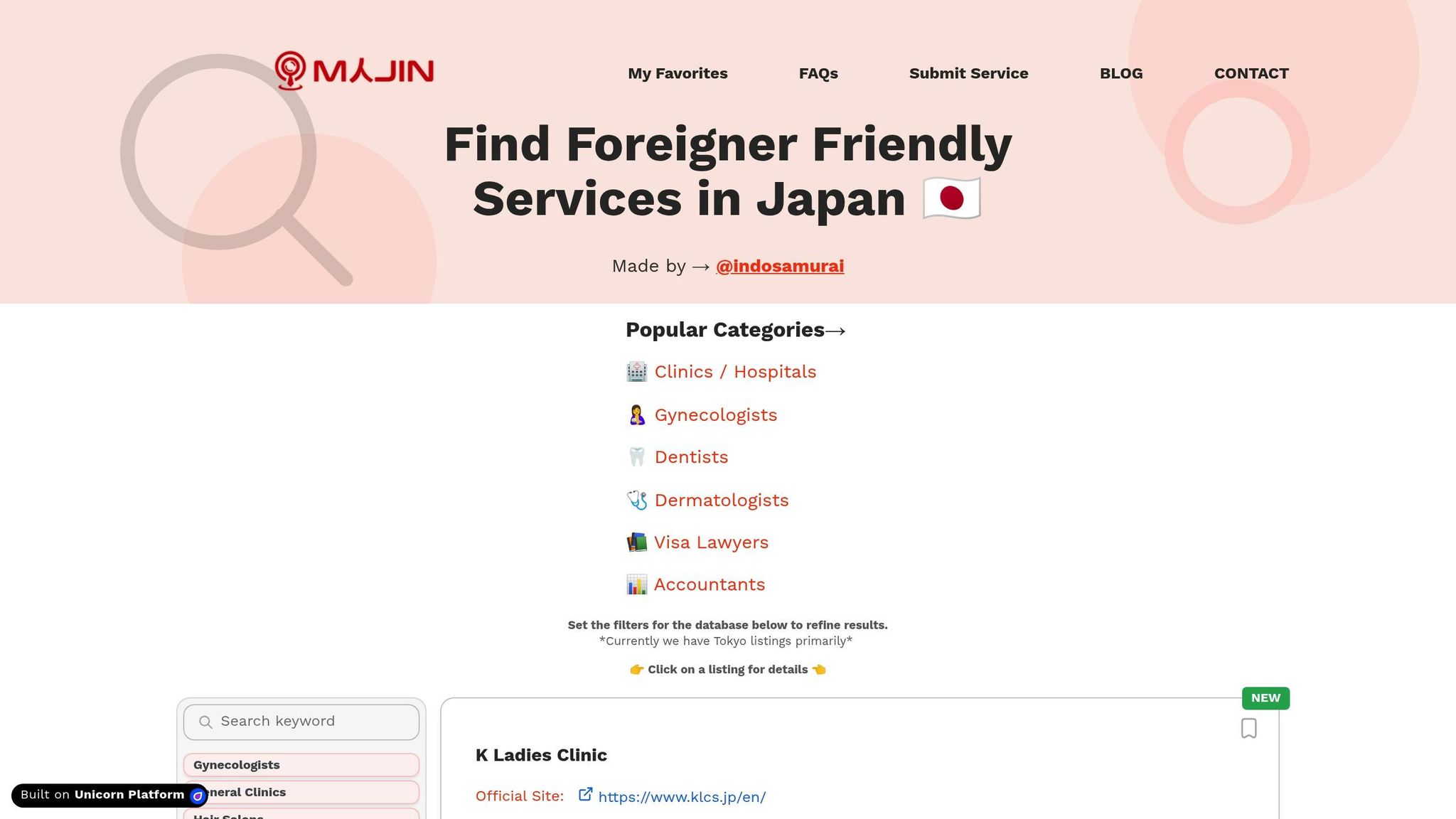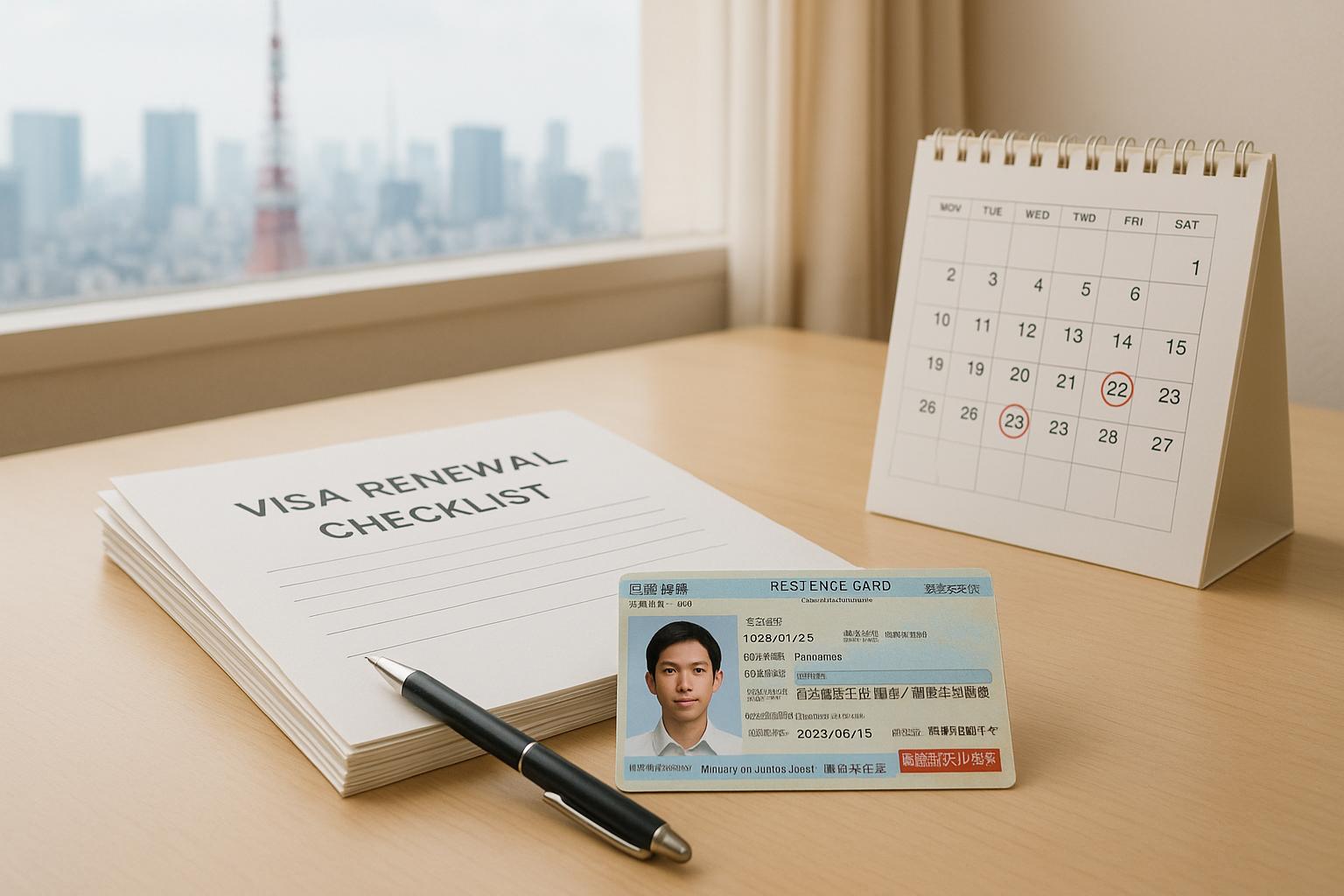Opening a bank account in Japan as a foreigner can seem complicated, but it's manageable with the right preparation. Here's what you need to know:
- Eligibility: Most banks require at least six months of residency. However, Japan Post Bank (Yucho) allows newcomers to open an account immediately upon arrival.
- Documents: You'll need your residence card, passport, proof of address, a Japanese phone number, and sometimes additional documents like a My Number card or student/employment verification.
- Best Banks for Foreigners: SBI Shinsei Bank, SMBC Trust Bank PRESTIA, Sony Bank, Japan Post Bank, and Rakuten Bank offer varying levels of English support and features.
Quick Overview of Steps:
- Preparation: Gather required documents and ensure your name is written in katakana.
- Choose a Bank: Select one based on your needs (e.g., English support, ATM access).
- Apply: Submit your application online or in person. Online options like Sony Bank or Rakuten Bank are faster.
- Verification: Be ready for phone verification and provide accurate details.
- Account Activation: Once approved, you'll receive your ATM card, bank book, and online banking credentials.
Quick Comparison of Banks:
| Bank | English Support | Initial Deposit | Monthly Fees | Key Features |
|---|---|---|---|---|
| SBI Shinsei Bank | Excellent | ¥10,000 | Waived (¥300,000 balance) | Free ATM withdrawals, strong English support |
| SMBC Trust Bank PRESTIA | Excellent | ¥500,000 | Varies | Premium services, international transfers |
| Sony Bank | Good (online) | ¥0 | ¥0 | Digital banking, low forex fees |
| Japan Post Bank (Yucho) | Limited | ¥1,000 | ¥0 | Extensive ATM network |
| Rakuten Bank | Good (online) | ¥0 | ¥0 | Digital banking, rewards system |
Requirements and Documents You Need
Who Can Open a Bank Account
In Japan, most banks require foreign residents to have lived in the country for at least six months before opening a bank account. However, Japan Post Bank (Yucho) is an exception. It’s one of the few banks that allows newcomers to open an account even if they’ve been in Japan for less than six months. This makes it a convenient option for those who’ve just arrived.
To open an account, you’ll need a valid residence visa, such as a work, student, spouse, or long-term resident visa. Tourist visas, however, are not accepted since banks require proof of your intention to stay in Japan for an extended period. Specific requirements may vary by bank. For instance, students might need to show their student ID and enrollment certificate, while workers may be asked to provide an employment contract or salary certificate.
Once you confirm your eligibility, gather the necessary documents to make the process smoother.
Required Documents Checklist
Here’s what you’ll need to bring:
- Residence card and passport: Your residence card (zairyu card) must display your current address. Both this and your passport are essential at nearly all banks.
- Proof of address: Accepted documents include a utility bill, rental contract, or a residence certificate (juminhyo) from your local ward office. If you’re in a share house or company dormitory, you may need an official address confirmation letter from your landlord or employer.
- Japanese phone number: A local phone number is required for verification calls and SMS notifications. If you don’t have a phone contract yet, consider using a prepaid SIM card.
- Name in katakana: Many banks require your name in katakana. While some banks offer a conversion service, having your name written in katakana beforehand can speed things up.
- Initial deposit: Banks typically require an initial deposit ranging from ¥1,000 to ¥10,000. Be sure to bring Japanese yen, as foreign currency is usually not accepted.
- Additional documents: Depending on the bank, you might need to provide extra items like your My Number card or notification card. International students should prepare their student ID and enrollment certificate, while workers may need to submit an employment contract or a letter from their employer.
Being prepared with these documents will help ensure a hassle-free account opening experience.
Best English-Supported Banks in Japan
Top Banks for Foreigners
Navigating the banking system in Japan can be much easier when you find a bank that offers strong English support. Here are some banks that cater to international customers and their specific needs:
SBI Shinsei Bank stands out for its excellent English support, offering a fully translated website and English-speaking customer service. Their PowerFlex account is a favorite among foreign residents, featuring perks like free ATM withdrawals at convenience stores. To open an account, you'll need an initial deposit of around ¥10,000. Monthly fees are waived if you maintain a designated balance.
SMBC Trust Bank PRESTIA is tailored to international clients, providing services like international transfers and multi-currency transactions. Their premium account services start with a minimum balance of approximately ¥500,000.
Sony Bank operates primarily online and offers robust English support through its website and mobile app. It’s known for its competitive foreign exchange rates and low international transfer fees. With no required minimum balance or monthly maintenance fees, it’s a great option for those who prefer digital banking.
Japan Post Bank (Yucho) is a convenient choice for newcomers, thanks to its extensive network of over 24,000 ATMs across Japan. While its English support is somewhat limited, many appreciate its accessibility and user-friendly services.
Rakuten Bank combines strong digital banking options with English support on its website and mobile app. It’s part of the Rakuten ecosystem, allowing account holders to earn points on transactions. With competitive interest rates and no monthly maintenance fees, it’s a solid choice for those who value rewards and online convenience.
| Bank | English Support Level | Initial Deposit | Monthly Fee | Best For |
|---|---|---|---|---|
| SBI Shinsei Bank | Excellent | ~¥10,000 | Waived with ~¥300,000 | General banking with ATM accessibility |
| SMBC Trust Bank PRESTIA | Excellent | ~¥500,000 | Varies by account type | Premium services and international transfers |
| Sony Bank | Good (online) | ¥0 | ¥0 | Digital banking and forex |
| Japan Post Bank (Yucho) | Limited | ~¥1,000 | ¥0 | Accessibility and ATM network |
| Rakuten Bank | Good (online) | ¥0 | ¥0 | Digital banking and rewards |
Using Myjin as a Verification Model

When evaluating banks in Japan, it can be helpful to adopt an approach similar to Myjin, a platform known for listing foreigner-friendly services across various categories like healthcare, legal, and accounting. Myjin’s thorough verification process provides a useful framework for assessing banks.
To determine whether a bank meets your needs, consider the following:
- Does the bank clearly outline its English support, both online and in branches?
- Are contact details and branch locations easily accessible?
- What do reviews from other international customers say about the bank’s service quality?
Taking these factors into account can help you find a bank that aligns with your specific needs while ensuring a smoother banking experience in Japan.
How to Open Your Bank Account: Step-by-Step Process
Getting Ready to Apply
Before diving into the application process, make sure you're properly prepared. Gather all the necessary documents and make photocopies, as banks will often keep copies while returning your originals.
Your name will need to be written in katakana (Japanese phonetic script) for all banking documents. It's essential to ensure this katakana version is consistent across all applications and official documents in Japan. If you're unsure, ask a native speaker to confirm the correct spelling.
Good news - most foreign-friendly banks in Japan accept signatures, so you likely won’t need a registered hanko (personal seal).
To save time, aim to apply mid-week and avoid peak periods like the end of the month or the busy March–April season. Once your documents are ready, you can choose to submit your application either online or in person.
Submitting Your Application
The application process can be done online or in person, and each method has its own perks.
Online applications are quick and convenient, especially with banks like Sony Bank or Rakuten Bank. These banks often offer English-language support, and the entire process, including uploading digital copies of your documents, takes around 15-30 minutes. Some banks may verify your identity through a video call or a document scan.
If you prefer the in-person approach, visit a branch during less busy hours, typically between 10:00 and 15:00 on weekdays. If you're not confident in your Japanese, bring along a Japanese-speaking friend, even at banks that offer English support, as not all staff may be fluent in English.
When filling out the application form, you’ll need to provide details about your employment, income, and the purpose of your account. Make sure the information is accurate.
For identity verification, you’ll need to present both your residence card and passport. Bank staff will compare the details and may ask about your residence status and employment. If you’re on a student visa, have your student ID ready and be prepared to explain any part-time work.
To confirm your address, you’ll need additional documentation beyond your residence card. Utility bills, rental contracts, or municipal tax notices are commonly accepted. These documents must be recent (usually within the last three months) and clearly display your name and current address.
Some banks may also conduct phone verification within 24-48 hours of your application. They’ll call the number you provided to confirm your identity and details. Be sure to answer this call, as missing it could delay the process.
Getting Your Bank Card and Account Information
Once your application is approved, here’s what happens next. Approval times vary: online applications generally take 3-7 business days, while in-person applications are usually processed within 1-3 days. Your banking materials will arrive in separate deliveries.
First, your ATM card will arrive via registered mail, typically within a week. The card will include a temporary PIN, which you’ll need to change at an ATM belonging to your bank before making any transactions.
Next, your bank book (通帳, tsūchō) will be delivered separately, also via registered mail. While many people now rely on online banking, the bank book is still important for certain transactions and serves as an official record of your account. Some landlords or employers may require a copy of your bank book for verification.
Your online banking credentials will arrive in a separate envelope through regular mail. These include your login ID and an initial password, which you should change immediately upon your first login. Many banks require you to activate your online banking account within 30 days of receiving these credentials.
To fully activate your account, you’ll need to make an initial deposit. This can be done at any branch ATM or via an online transfer if you have another Japanese bank account. Most banks require a minimum deposit of ¥1,000 to ¥10,000.
Finally, set up your mobile banking app. Download the app from your bank’s website or app store, and register using your online banking credentials. Mobile banking apps often have English language support and make managing your account much more convenient than relying solely on ATMs or branches.
Once everything is set up, you’ll receive your account number (7-8 digits) along with your bank’s financial institution code and branch code. Keep this information secure - you’ll need it for salary deposits, utility payments, and other essential transactions in Japan.
sbb-itb-cbc0cbb
Using and Managing Your Japanese Bank Account
Keeping Your Account Information Current
It's important to keep your personal details - like your address or phone number - up to date to avoid any interruptions in your banking services. Most banks in Japan offer several ways to update this information: online, through postal mail, by phone, or by visiting a branch in person.
If you change your address, make sure to notify your bank right away. The process may differ depending on whether you're moving within Japan or relocating overseas, especially if you have other financial products tied to your account. To keep things running smoothly, inform your bank as soon as possible about any major changes. Having digital copies of essential documents handy can make the update process quicker and easier.
Now, let’s look at how to make the most of ATMs, online banking, and transfer services.
How to Open a Bank Account in Japan | Docs Required | Top 3 Recos for Online or Regular Bank | Etc!
Summary: Opening Your Japanese Bank Account Successfully
Navigating the Japanese banking system as a foreigner becomes much easier with the right preparation. Start by gathering all the necessary documents before applying, and consider choosing a bank that offers strong English-language support to make the process more straightforward.
Take advantage of online and mobile banking to manage your account efficiently. These tools let you handle tasks like transfers, bill payments, and expense tracking - all accessible in English.
It's also crucial to keep your personal information up to date to avoid any disruptions. Notify your bank immediately if you change your address, renew your residence card, or extend your stay in Japan. Staying on top of these updates helps prevent transaction issues and ensures your banking experience remains hassle-free.
Although Myjin primarily focuses on healthcare, legal, and beauty services for foreigners in Japan, its model reflects the growing availability of services tailored to non-Japanese residents. These expanding resources can be a lifeline as you settle into life in Japan, whether you're managing your finances or handling everyday needs. This growing network of support ensures you can access your financial resources with ease.
FAQs
What can I do if I don’t have a Japanese phone number when opening a bank account?
If you don’t yet have a Japanese phone number, don’t worry - many banks still allow you to open an account without one. That said, having a local number can make the process much easier. Some banks might require a Japanese phone number for verification, while others may not ask for it right away. It’s always a good idea to check the specific requirements of the bank you’re planning to use.
If a phone number is absolutely necessary, you can look into getting a prepaid SIM card or signing up for a phone plan in Japan. Prepaid SIM cards are widely available and can serve as a temporary solution until you secure a permanent number. Just ensure the number is active and accessible, as it could be used for important communications or verification steps.
What can I do to make opening a bank account in Japan easier if I don’t speak Japanese?
If Japanese isn't your strong suit, there are a few ways to make opening a bank account in Japan a bit easier. One option is to bring along a Japanese-speaking friend or colleague who can assist with communication at the bank. Additionally, some banks provide English support, so opting for a foreigner-friendly bank like Yucho or Mizuho can help reduce stress during the process.
Before heading to the bank, ensure you have all the necessary documents ready. These typically include your residence card (zairyu card), passport, proof of address, and, in some cases, a personal seal (hanko). Being well-prepared can help things move along more smoothly. If you're unsure which bank to go with, prioritize those known for their services tailored to foreign residents and availability of English-speaking staff.
Which banks in Japan are best for foreigners needing digital banking and international transaction services?
Several banks in Japan cater effectively to foreigners, particularly in the areas of digital banking and international transactions. Shinsei Bank is a standout option, thanks to its easy-to-use English interface and extensive online banking tools. Similarly, SBI Shinsei Bank and Prestia SMBC Trust Bank are well-regarded for their low fees and personalized support for non-Japanese residents.
If you're leaning toward a digital-first experience, Rakuten Bank is a strong contender. It boasts a reliable online banking platform alongside competitive fees for foreign transactions. These banks are ideal choices for foreigners navigating Japan's banking system while handling international money transfers.


